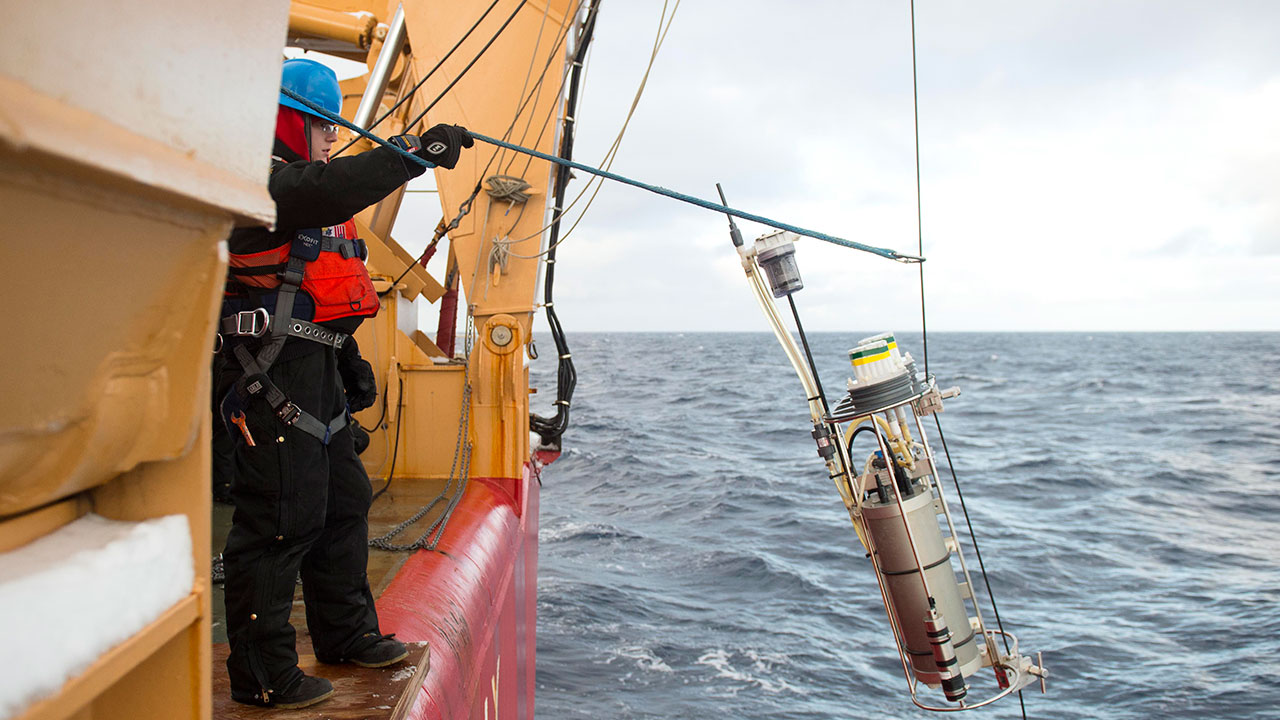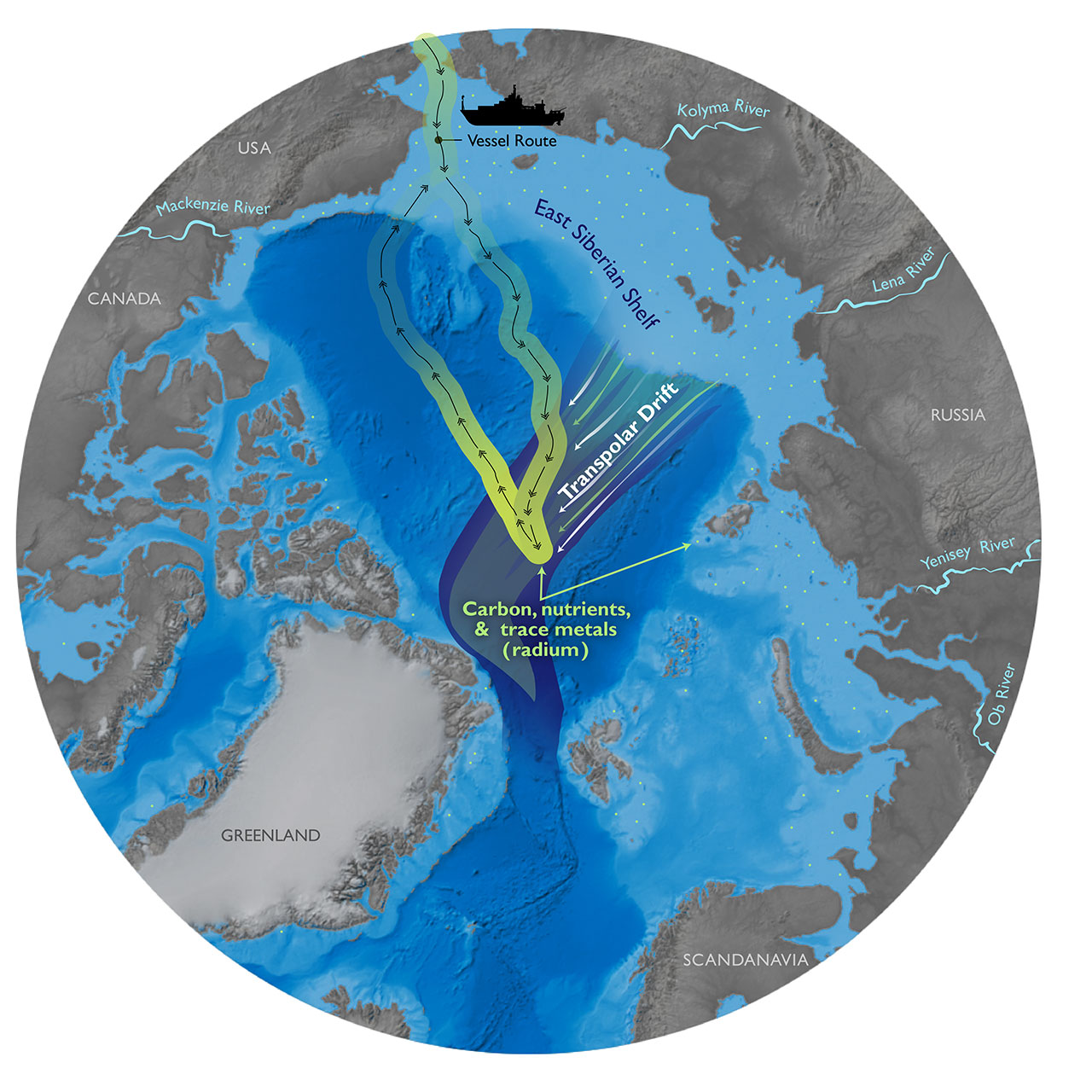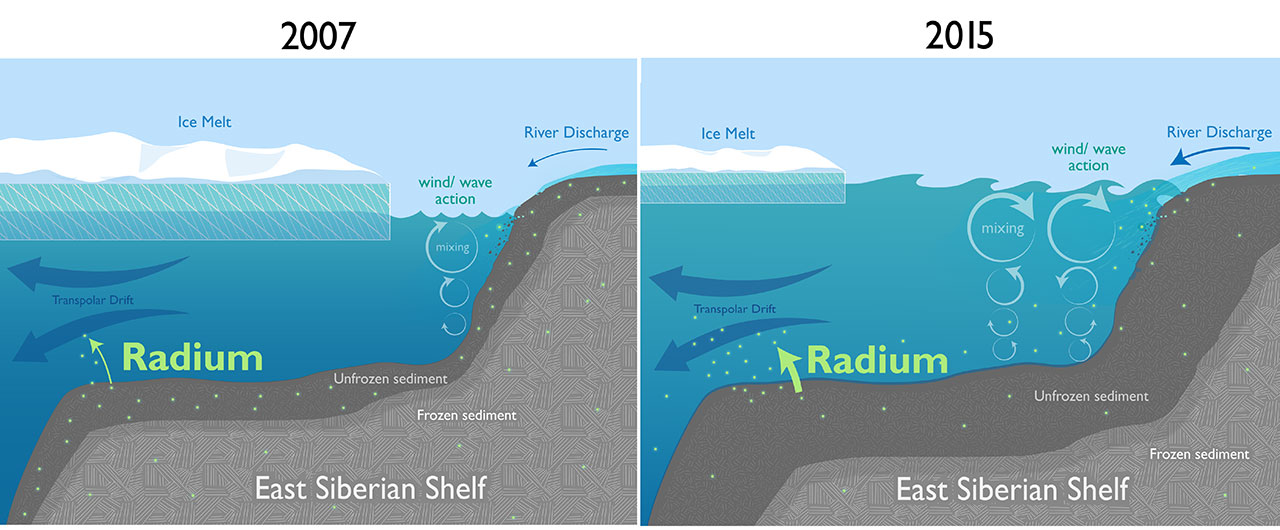A spike in central Arctic Ocean radium levels startled scientists — and led to discoveries about how the ocean is rapidly changing
Scientists found that the amount of radium-228 in the central Arctic ocean had nearly doubled between 2007 and 2015. They traced it to shallow continental shelves where dramatic changes are taking place.

In 2007, researchers climbed onto the icebreaker Polarstern and debarked from the northern Norwegian city of Tromsø, which sailed to the central Arctic Ocean. Here, they took samples of the surface water, examining them for a special isotope, radium-228.
Years later, in 2015, a second research team found their own way to the same central Arctic waters, this time on board the American icebreaker Healy,on a similar mission, to test the central Arctic waters for the radium-228 isotope.
Comparing the measurements from 2007 and 2015, the researchers made a startling discovery, recorded in a January article published in the journal Science Advances: the amount of radium-228 had nearly doubled over the last eight years, indicating significant changes are happening along the Arctic coast due to climate change.
Radium-228 is a naturally-occurring isotope that dissolves in water, making it easy for scientists to track its origin, flow and how much is found in the water. It is added to the water when the sea encounters the coastline or continental shelf, the underwater extension of a continent.
“Seeing high levels of radium tells us that the water has recently been in contact with the coast and that’s what makes it a good tracer,” said Lauren Kipp, a graduate student at Woods Hole Oceanographic Institution and MIT and lead author of the study.
For the study, Kipp and her co-researchers took samples of sea surface water at 69 locations spanning from the southern Chukchi Sea up to the North Pole and looping around through the Canada Basin and the Beaufort Sea.

They then looked at the level of radium-228 concentrations in the Chukchi Sea Shelf between Russia and the United States, which were close to concentrations recorded in another study in 2002. But, in the middle of the Arctic Ocean, these concentrations were much higher — almost double.
“That’s what really surprised us when we got back,” said Kipp. “We expected the highest levels of radium over the Chukchi Shelf, the source. It was really crazy that we were seeing these high levels of radium in the middle of the ocean, as far as you can get from the shelf.”
The researchers parsed through all the different possible sources of the radium, including sea ice, rivers terminating in the Arctic Ocean and water from the Pacific and Atlantic Oceans. Even when combining all these sources, the researchers still found that 80 percent of the radium-228 was unaccounted for — the only source remaining was sediments from continental shelves.
The fact that so much sediment was being unloaded into the Arctic Ocean from continental shelves compared to years before signaled rapid changes in the Arctic region. Specifically, the scientists hypothesized that a loss of sea ice cover and longer ice-free periods close to the coast have opened up the waters, causing more wave activity that kicks up sediment from the continental shelf.

Using the movements of sea ice in the Arctic Ocean as a guide, the study traced the source of radium to the East Siberian Arctic Shelf off Russia. And while the sediment from the East Siberian Arctic Shelf itself didn’t travel all the way to the pole, the presence of radium-228 signals that other particles — including nutrients and carbon — could.
Michiel Rutgers van der Loeff, a scientist with the Alfred-Wegener Institute and expert in marine geochemistry, was also surprised by the 2015 data. Rutgers van der Loeff was the lead author of the 2007 research and has continued to study in the area. In 2015, Rutgers van der Loeff met Kipp’s team at the North Pole on separate ships — his separate measurements of radium-228 in the Arctic confirm the increase recorded by Kipp’s team.
“The next question is what the implications could be when the supply of other substances released by the shelf sediments and transported in the Transpolar Drift over the central Arctic Ocean was to change along with radium-228,” Rutgers van der Loeff wrote in an email.
If more nutrients and carbon have made their way to the central Arctic, this could affect the ecosystem starting at the bottom of the food chain. If one species favors higher concentrations of a nutrient, for example, they might out-compete other species, which might lead to further changes higher up in the food chain.
“The recent report…has potentially far-reaching implications for understanding the nature of elemental balances, biological productivity and organism diversity throughout these northern polar waters,” S. Bradley Moran, dean of the College of Fisheries and Ocean Sciences at the University of Alaska Fairbanks, wrote in an email.
Moran, as well as Kipp and Rutgers van der Loeff, called for further studies on the issue, especially factoring in changes in sea ice, permafrost thaw and other environmental shifts brought about by the warming Arctic.